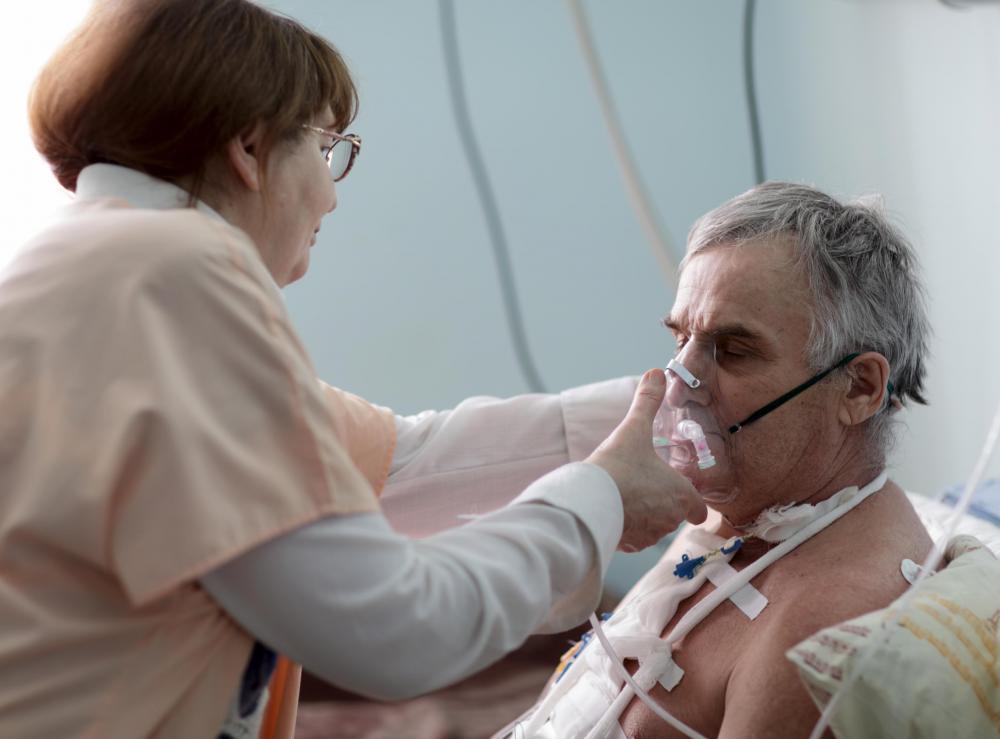At TheHealthBoard, we're committed to delivering accurate, trustworthy information. Our expert-authored content is rigorously fact-checked and sourced from credible authorities. Discover how we uphold the highest standards in providing you with reliable knowledge.
What Factors Affect Pulse Oximetry Levels?
A pulse oximeter is a noninvasive method to measure the amount of oxygenated hemoglobin in the blood. A clip-on probe emits infrared light from one edge of the clip through the earlobe or fingertip to a sensor that reads the results on the other end. This information is then transmitted back to the small computerized component of the oximeter, which displays the oxygen saturation level in percentages. Pulse oximetry levels can be affected by poor probe placement, pulse oximeter misinterpretations, physiological factors and any condition or disease that would reduce the body's ability to oxygenate red blood cell (RBC) hemoglobin. Satisfactory pulse oximetry levels must never be accepted as valid in the presence of clinical signs indicating hypoxia, or low oxygenation, such as cyanosis or rapid breathing.
Poor probe placement can result in erroneous pulse oximetry levels. The oximeter probe light is often unable to reach the reading sensor due to dark fingernail polish or tissue bruising. The light and the sensor of the oximeter clip should be directly across from each other with adequately vascularized tissue between them. Very bright environmental light such as that used in an operating room (OR) or recovery room can interfere with the ability of the oximeter sensor to read its own light. Use of the sensor on a patient's extremity with known peripheral artery disease, hypothermia or Reynaud's disease will not reflect the oxygenation of the body core.

Errors in measuring pulse oximetry levels might result from the oximeter's misinterpretation of probe readings. The probe is unable to differentiate between different types of hemoglobin that result from hemoglobin binding to substances other than oxygen. In situations such as carbon monoxide poisoning, the presence of carboxyhemoglobin will result in readings above the true saturation rate. Likewise, the probe consistently misreads methemaglobin when methylene blue is used as a treatment and returns a temporary and erroneous 85 percent saturation rate. Measurements of these levels also provide no information on carbon dioxide (CO2) levels in the blood and thus no warning of respiratory failure secondary to CO2 retention.

Pulse oximetry levels and oxygen saturation rates are also affected by temporary physiological states, such as recovery from general anesthesia or episodes of sleep apnea. Diseases that reduce the body's ability to oxygenate will also reduce pulse oximetry levels. This barrier to oxygen saturation can result from an inability to move oxygen into the lungs, such as in chronic obstructive lung disease (COPD) or an asthma attack. Inadequate oxygen saturation levels can also happen at the cellular level when there is an insufficient amount of hemoglobin present in the bloodstream to bind oxygen, such as low blood volume or anemia.
AS FEATURED ON:
AS FEATURED ON:
















Discussion Comments
Now-a-days, the cardiovascular disorders can be easily checked with the help of pulse oximeter as it helps in monitoring the pulse rate as well as the oxygen saturated blood.
Post your comments